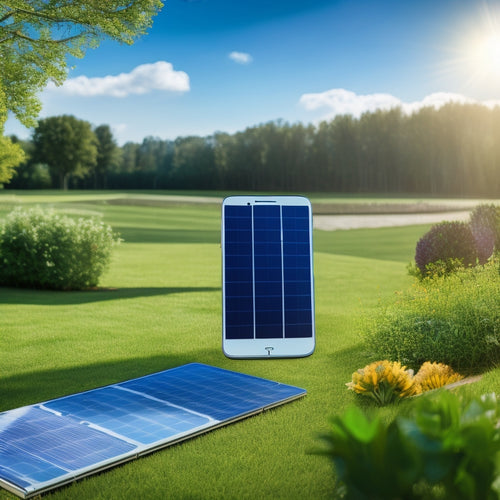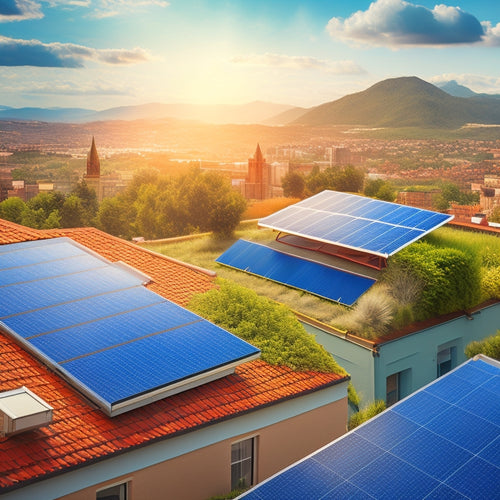
Why Choose Waterless Toilets for Sustainable Bathrooms?
Share
You're taking a critical step towards creating a sustainable bathroom by considering waterless toilets, a game-changing innovation that redefines the conventional toilet experience. By choosing waterless toilets, you'll benefit from significant water conservation, reducing your environmental footprint and saving on water bills. These eco-friendly systems also minimize waste and odor, promote a cleaner bathroom environment, and increase your property value. With reduced maintenance requirements and a longer lifespan, you'll enjoy cost efficiency and time savings. As you investigate the advantages of waterless toilets, you'll uncover more ways to create a sustainable bathroom that benefits both you and the planet.
Key Takeaways
- Waterless toilets conserve water resources, reducing environmental footprint and saving costs on water bills in the long run.
- Advanced ventilation systems in waterless toilets improve odor control, promoting a cleaner and healthier bathroom environment.
- Waterless toilets require less maintenance, reducing the risk of clogs, leaks, and corrosion, and leading to cost efficiency and time savings.
- They contribute to a more sustainable future by reducing wastewater treatment energy and turning waste into nutrient-rich compost.
- Waterless toilets are a highly sought-after feature in sustainable homes, increasing property value and appeal to eco-conscious buyers.
Water Conservation Benefits
Water conservation is a top priority in sustainable bathrooms, and waterless toilets are an important step in the right direction. You'll greatly reduce your water usage with these eco-friendly designs.
Traditional toilets use around 1.6 gallons per flush, whereas waterless toilets use zero. This results in considerable water savings, especially in commercial or residential buildings with high occupancy rates.
Additionally, just like renewable energy sources are utilized to power electric vehicles, waterless toilets can be an essential component in a sustainable infrastructure.
By choosing waterless toilets, you're contributing to a more sustainable future. You'll also lower your water bills, which can lead to notable cost savings over time.
With waterless toilets, you're not only conserving this precious resource but also reducing your environmental footprint.
Reduced Waste and Odor
Improved odor control through advanced ventilation systems and natural decomposition processes.
Additionally, incorporating solar-powered energy systems, energy self-sufficiency can further enhance the eco-friendliness of sustainable bathrooms.
Effective waste management through self-contained systems that reduce waste volume and odor, reducing the risk of sewage backups and clogged pipes, resulting in a cleaner and healthier bathroom environment.
Increased Property Value
By incorporating sustainable bathroom features like waterless toilets, you're not only reducing your environmental footprint but also enhancing your property's value. This eco-friendly upgrade can greatly elevate your property appeal, making it more attractive to potential buyers.
As consumers become more environmentally conscious, market demand for sustainable homes is on the rise. In fact, properties with EV charging stations, for example, can command higher rents and sales prices, further emphasizing the importance of sustainable features.
Waterless toilets, in particular, are a highly sought-after feature, especially among eco-conscious buyers. By installing these toilets, you're not only appealing to this demographic but also future-proofing your property.
With the growing importance of sustainability, having a waterless toilet can be a major selling point, setting your property apart from others in the market.
Low Maintenance Requirements
Regularly, homeowners are surprised by how much time and money they can save with waterless toilets.
You'll find that waterless toilets require less maintenance compared to traditional toilets. This is because they don't use water, which means there's no risk of clogs, leaks, or corrosion.
By implementing sustainable practices, such as optimizing route planning and logistics, homeowners can reduce their environmental footprint. Additionally, waterless toilets align with the goal of reducing emissions and operating costs, making them a great choice for eco-friendly bathrooms.
- Reduced maintenance frequency, resulting in cost efficiency and more free time for you.
- Fewer chances of unpleasant odors and messes, promoting a more comfortable and hygienic user experience.
- Longer lifespan of the toilet, reducing the need for frequent replacements and repairs.
Environmental Impact Reduction
As you consider the advantages of waterless toilets, you'll find that their environmental benefits are just as persuasive as their low maintenance requirements.
By choosing eco-friendly innovations like waterless toilets, you're reducing your water consumption and conserving this precious resource. Traditional toilets use a significant amount of water per flush, contributing to wastewater that requires treatment and disposal.
In contrast, waterless toilets employ composting systems that break down waste into a nutrient-rich compost, reducing the environmental impact of wastewater.
Furthermore, just like hydroelectric power plants that generate substantial electricity for EV charging, waterless toilets also reduce the energy required for wastewater treatment, ultimately minimizing your carbon footprint and contributing to a more sustainable future.
Frequently Asked Questions
Are Waterless Toilets More Expensive Than Traditional Toilets?
You'll likely find that waterless toilets come with higher initial costs, but don't let that deter you - they'll provide long-term savings on your water bill, and you'll enjoy the freedom from wastefulness that comes with it.
Can I Install a Waterless Toilet Myself?
Oh, you're a DIY expert, huh? Think again! While it's technically possible to install a waterless toilet yourself, be prepared for a world of complexity. Heed installation tips and be aware of maintenance requirements to avoid a crappy situation.
Are Waterless Toilets Suitable for Small or Large Families?
You'll find that waterless toilets are suitable for families of all sizes, as they manage waste effectively regardless of family size, and their efficient waste management systems can handle varying volumes of waste without compromising performance.
Do Waterless Toilets Meet Building Codes and Regulations?
As you steer through the world of eco-friendly bathroom solutions, you'll find that waterless toilets often meet, and even exceed, building code compliance and regulatory standards, much like a skillfully crafted puzzle piece fitting seamlessly into place.
Can I Connect a Waterless Toilet to a Septic System?
You can connect a waterless toilet to a septic system, benefiting from reduced water consumption and odorless operation, as most waterless toilet systems are compatible with septic systems, offering a sustainable solution for off-grid living.
Related Posts
-

Why Merge Earth's Heat With Sun's Energy?
You're about to utilize the full potential of renewable energy by combining the Earth's natural heat with the Sun's a...
-

7 Best Solar Panel Upkeep Apps for Homeowners
You can optimize your solar panel's energy output and efficiency by up to 20% with regular maintenance, which is wher...
-

What Roofing Materials Best Protect Our Planet?
As you consider the environmental impact of your building, you're likely to find that the roofing material you choose...


